Coles Driving Academy can provide you with training with regards of how to work out the speed limit on any road you drive on within the UK by following a simple rule in the Highway Code of which was started in in 1934. To book a training session with us to cover this please give us a call or email us via the contact box opposite.
To learn more about how to work out speed limits you may want to read our help and advice sheet below, here is a summary on how to work out a speed limit on a road in GB
Firstly you have a Gateway sign as you enter into a new (change) speed limit.
If the area has street lights the speed limit will be 30 mph unless a sign shows to the contrary or you are driving on a motorway.
If the area has no street lights the speed limit will be national speed limit unless a sign shows to the contrary or you are driving on a motorway. Remember you have to take in to account what type of vehicle you are driving and what type of road you are driving on, whether it be a single carriageway or a dual carriageway.
Motorways will be national speed limit unless a sign shows to the contrary.
Signs to the contrary normally have repeater signs unless driving in a speed limit zone (parth in Wales).
Many people struggle to work out the speed limits on the UK roads, not just learner drivers but advanced and experienced drivers, however the above is a simple system that can help and further details are shown below.
Firstly the Highway Code states in Rule 124
"You MUST NOT exceed the maximum speed limits for the road and for your vehicle (see the table below). The presence of street lights generally means that there is a 30 mph (48 km/h) speed limit unless otherwise specified.
"Law RTRA sects 81, 86, 89 & sch 6”
Therefore speed limits should never be seen as a target but a maximum speed that you can travel at if it is safe to do so, However there are many circumstances where the speed limit would not be safe to do for example around schools during opening and closing times, during poor weather conditions and poor road conditions.

To be able to fully understand how to work out speed limits on all roads within the UK we need to understand a few things about signs and speed limits.
All road signs that utilise the circular red circle are mandatory or signs that are giving orders.
These signs may be on their own like to one showing to the right or they can be incorporated into other signs for example temporary signs or information signs as below.

With this in mind as you examine roads signs in more depth you will find that any red edged circular sign like these with a number in relates to a speed limit that you must not exceed. Modern high speed roads or smart motorways are now using an overhead gantry system to show the speed limit via an electronic sign.
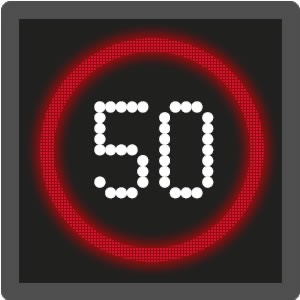
Mandatory speed limits in an overhead gantry.

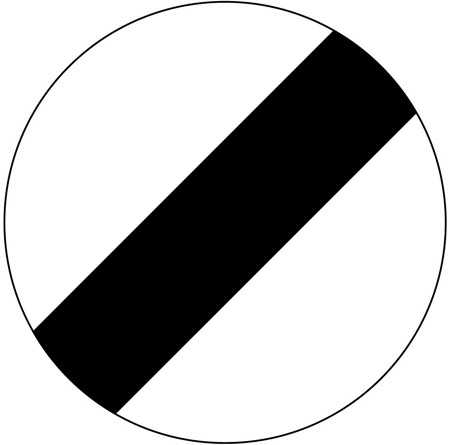
However there is another mandatory speed limit sign and this is the inherited sign now known as the national speed limit, shown to the right.
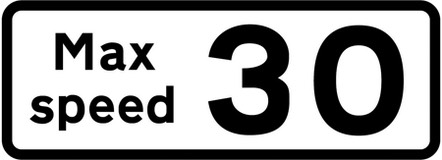

Other speed limit signs come in the form of advisory speed limits, on upright posts or in the overhead gantries of modern high speed roads. These signs look like these below.
To work out the speed limit on any road we just need consider a few things.
1. Remember that in areas of street lighting (other than on motorways) a 30 mph limit applies unless another limit is specifically signed.
2. The speed limit is the maximum speed, in miles per hour, at which traffic may travel and only if it is safe to do so.
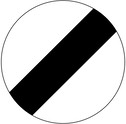 3. The national
speed limit for
the type of road
and class of vehicle (traffic) applies.
3. The national
speed limit for
the type of road
and class of vehicle (traffic) applies.
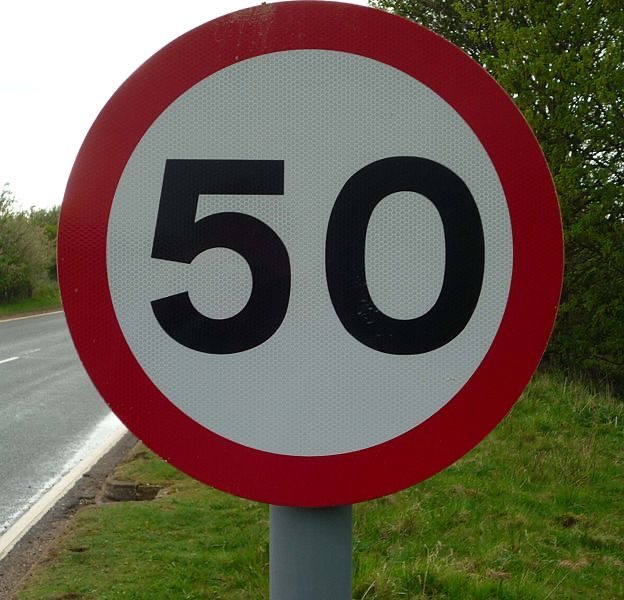
4. A larger sign indicates the start of a speed limit and usually one will be placed either side of the road, commonly known as starter signs officially called Gateway Signs.

5. Smaller repeater signs act as reminders. Repeater signs for a 30 mph limit are used only on roads with no street lighting. Repeater signs for the national speed limit are used only on roads with street lighting (other than motorways)
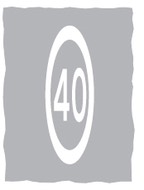
6. Road marking can be used in conjunction with upright signs to indicate the speed limit.
7. Entrance to a zone (parth in Wales) will be signed appropriately at the start of the zone and there may be no repeater signs within the zone.

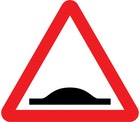
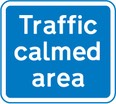
A zone is an area where a speed limit is enforced by engineering, road design, commonly known as traffic calming measures, for example - speed humps, road narrowing, rumble strips,
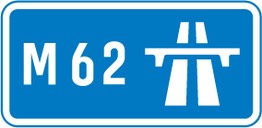
An end of a zone (diwedd y parth in Wales), again will be signed appropriately and start with end of zone signs and the new speed limit.
8. Most speed limits tend to change at or around roundabouts or junctions, they can also change at the boundary of a town or village.
Start of motorway regulations, including the national speed limit (unless a different speed limit is signed)

9. A speed limit sign may point to a road with street lighting where an existing 30 mph limit originally ended but has subsequently been extended (temporary sign). This sign alerts drivers that a previous higher limit has been replaced by a 30 mph limit by the removal of speed limit signs.
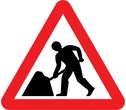
10. End of road works and any temporary speed limit through those works (may be supplemented by a sign indicating the permanent speed limit beyond the road works)
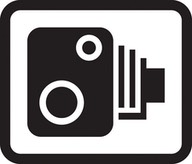

11. A Reminder that enforcement cameras are in use (may be supplemented by a speed limit sign)
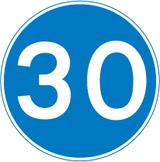
12. Minimum speed permitted, in miles per hour, unless it is impracticable or unsafe to comply

13. End of minimum speed requirement
So to summarise how to work out a speed limit on a road within the UK is
As you enter in to a change of speed limit you will have starter signs.
If the area has street lights the speed limit will be 30 mph unless a sign shows to the contrary or you are driving on a motorway.
If the area has no street lights the speed limit will be national speed limit unless a sign shows to the contrary or you are driving on a motorway. Remember you have to take in to account what type of vehicle you are driving and what type of road you are driving on, whether it be a single carriageway or a dual carriageway.
Motorways will be national speed limit unless a sign shows to the contrary.
Signs to the contrary normally have repeater signs unless driving in a speed limit zone (parth in Wales).
Highway code table
Vans, car-derived vans and dual-purpose vehicles
Most vans:
- have a lower speed limit than cars
- must follow the speed limits for goods vehicles of the same weight
Vehicles under 2 tonnes laden (loaded) weight may qualify as a ‘car-derived van’ or ‘dual-purpose vehicle’. These vehicles have the same speed limits as cars.
Motorhomes
Motorhomes or motor caravans are classed as goods vehicles if they:
- carry goods for exhibition and sale
- are used as a workshop
- are used for storage
Locally set speed limits
Local councils can set their own speed limits in certain areas, and these must be clearly signed.
For example:
- 20 mph zone in a built-up area near a school
- 50 mph (rather than 60 mph) limit on a stretch of road with sharp bends
Speed limiters
A speed limiter must be fitted on:
- vehicles with more than 8 passenger seats, eg buses, minibuses, coaches, stretch limousines
- goods vehicles with a maximum laden weight of more than 3.5 tonnes
Speed limiters are designed to reduce accidents. They limit the maximum speed of a vehicle by restricting the fuel supply to the engine. Having a speed limiter may mean that your vehicle cannot reach the speed limit.